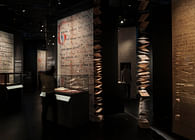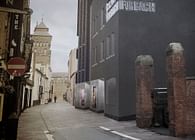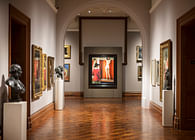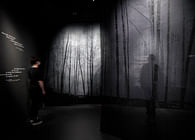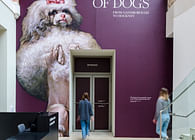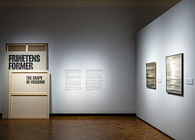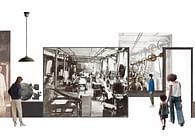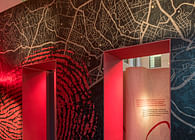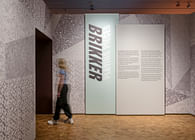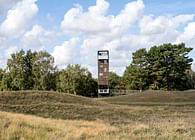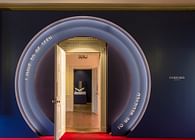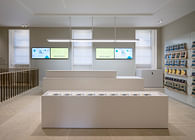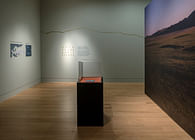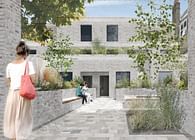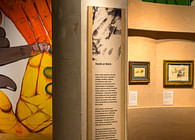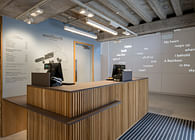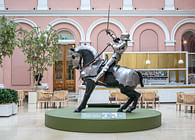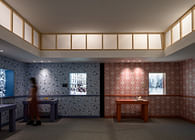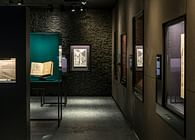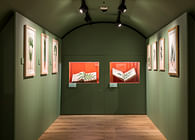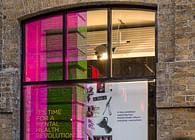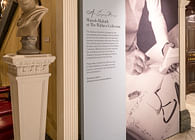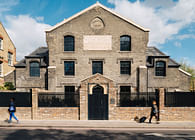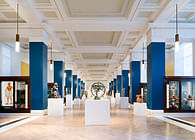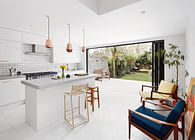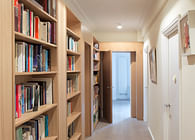
London, GB
Goya and Munch: Modern Prophecies is a new exhibition at MUNCH in Oslo, designed by Nissen Richards Studio, who also worked with the MUNCH Museum on two earlier exhibitions - ‘Playing Pieces’ in 2022, featuring the collection of Norwegian philanthropic organisation Sparebankstiftelsen DNB and ‘The Shape of Freedom’ earlier in 2023, which examined artistic links between Europe and America as both continents faced post-war recovery in the second half of the 20th century. The new exhibition, which is now open, will run until February 2024.
Background to the Exhibition:
Goya and Munch: Modern Prophecies boasts a dual theme, taking as its focus the parallels between two artists from opposite ends of Europe – Spanish artist Francisco de Goya (1746–1828) and Norwegian artist Edvard Munch (1863-1944). Whilst both artists lived different lives in separate historical eras, the exhibition takes as its starting point the idea that in Munch’s lifetime, Goya had very much been rediscovered and was beginning to garner the recognition due to him as a forerunner of modernism.
Goya created fantastical, disturbing works which responded to the wars, social pressures and hypocrisy of his time. Long after his death, Munch’s generation of European artists were amazed and inspired by Goya’s inventive use of different media and techniques and his embrace of the darker, mysterious side of the human imagination. Although it has proved difficult to confirm whether Munch himself was directly inspired by Goya’s art, both clearly shared certain artistic interests. The curatorial research and direction behind this exhibition set out to reveal the manifold implicit connections between Goya and Munch: the admiration for Goya by Munch’s friends and associates; the Goya exhibitions Munch might have seen and the publications and projects where their artistries link up.
Focusing on the different ways the two artists addressed themes relating to society, war, faith and superstition, Goya and Munch: Modern Prophecies uncovers fascinating similarities between them. As well as a wide selection of famous and lesser-known drawings, prints and paintings by both artists, visitors get a rare chance to view complete sets of Goya’s famous print series ‘Disasters of War’ and ‘The Caprices’.
Design Approach:
The exhibition is divided into three themed areas - society, war and faith. ‘Part of our brief was to create these three larger thematic spaces as well as immersive transition areas’, Pippa Nissen, Director of Nissen Richards Studio explained. ‘The concept was for the ‘inbetween’ spaces to use light and sound to create sensory spaces that emotionally connect and prepare visitors as they move between the different themes. Light and projection are used to ensure these areas are not static, with one area using shadows from details of the artworks, for example, so that visitors feel they are almost stepping into the etchings, whilst soundscapes of abstracted fragments of sound introduce a multi-sensory aspect.’
Nissen Richards Studio created both the exhibition design and the graphic design for the project, with a very simple and clean graphic approach that explored concepts of absence and presence, using different materials and finishes with monotone contrasts that play with shadows and depth. All lighting design was undertaken by MUNCH’s in-house team. Sound artist Carolyn Downing was commissioned to create the soundscapes for the transition areas, having previously worked with Nissen Richards Studio on many projects, including the multi-award-winning ‘Wordsworth Grasmere’ project in the Lake District; Collider: Step Inside the World’s Greatest Experiment’ at the Science Museum and ‘You Say You Want A Revolution’ at the V&A.
Exhibition Walk-through:
The exhibition starts with an introduction space, with the walls painted a very light grey, establishing the colour palette of greys and blues via an initial cool tone, with the walls gently getting darker on a gradient towards the end of the section. This area was key in terms of setting out the thinking and academic research behind the pairing of the two artists, creating connections in the visitor’s mind before seeing the more major artworks and themes. A small number of more biographical paintings feature here, including self-portraits by both artists.
A graphic timeline along one wall covers the period from Goya’s to Munch’s deaths and sets the scene in terms of establishing the identity and stylistic intent of both artists, linking them through the worlds they operated in and setting out the understanding Munch and his coterie would have had of Goya, as the latter’s influence grew to new heights. A first bespoke showcase in this area contains books from MUNCH’s library and includes volumes from Munch’s own personal collection.
After the introduction, visitors arrive at the first transition area, which features a light and sound installation. Its ceiling is created from a stepped, laser-cut pattern (using Valcromat), taken from a detail of a Munch painting, with backlighting creating a 360-degree immersive reflective space washing over the walls and black carpet. Sound artist Carolyn Downing, who is very experienced in conjuring atmospheres from her work in the theatre, created a series of abstract sounds for this space to ensure an emotional response from visitors. The sound design is partly made up of rhythm and partly of texture, separated into four sounds that pan across the space, sensitising visitors to the environment awaiting them.
Beyond the transition space lies the first of the three themed areas: ‘Society’. This space features two very large, bespoke showcases which cut across the space on a diagonal axis and contain Goya’s famous ‘The Caprices’ etchings series, totalling almost 80 individual prints. The overall space is painted a mid-grey, one shade darker than the introduction area. One wall is permanent and the others, which are not full-height and set at an angle, temporary and bespoke-made for this exhibition.
The showcases are set at an accessible height for good wheelchair access and at a 30° angle for optimum visibility. Lit from within, the showcases also act as light shafts across the space. Labels are on paper and the upper glass layer is non-reflective. Further artworks are arranged in groupings along the walls, including Goya’s famous ‘Autumn’ painting, which stands out from the etchings thanks to its rich colours and scale.
Transition space number two follows and is announced by a gentle, rather ghostly white light. Once inside the space, visitors see that it consists of a very large lightbox drawing visitors in and three large rectangular boxes, with a special acoustic fabric surface acting as individual speakers within each space, with the giant ‘T2’ speakers made by Newtone, based in Norway. Inside these, sound artist Carolyn Downing has created separate and immersive soundscapes which visitors hear only when they step inside, using sounds that give a sense of the next thematic area – War – via deep tones and rhythms, which provoke an eerie and ominous sensation.
‘War’ is divided into two sections. First, a ‘Munch room’; then, to the side, a colonnade of twenty 3m-high totems, painted midnight blue and constructed using the museum’s own system of proprietary metal frames. These monolithic totems call to mind both soldiers on parade or a series of gravestones and serve as holding structures for Goya’s ‘Disasters of War’ etchings series.
The third transition area takes the form of three gates in what seems to be a lit doorway, moving from dark to lighter tones. The first gateway is in fact solid, the second has a light arch set within it and the third is a glowing white archway. Within this transition area is the third soundscape – designed to be like a breath or a seascape, both ethereal and elevating.
Finally, the visitor arrives in the third and final section on faith and superstition, entitled ‘The Empty Cross’ after a drawing by Munch. This room is created as an elevated circle – cut into two separate semi-circles with gaps for visitors to enter and exit. A circular contemplation seat echoing that form sits at the centre.
The artworks here culminate in a crescendo of three of Goya’s six famous witchcraft paintings, originally in the collection of the Duke and Duchess of Osuna, and which have not been seen together since their original purchase in 1798.
‘Having become a close and highly-appreciated architect collaborator for MUNCH over several exhibition projects, Nissen Richards Studio once again delivered an exhibition architecture and design beyond our expectations. Their ability to translate curatorial thought and mediation concepts into architectural forms and spatial visitor experiences, their professionalism, and their dialogue and collaboration-based approach have been invaluable in creating an engaging and atmospheric exhibition for our visitors at MUNCH.’ (Nikita Mathias, Senior Concept Developer, MUNCH)
Status: Built
Location: Oslo, NO
Firm Role: Exhibition Designer
Additional Credits: Photography: Gareth Gardner
Curator : Trine Otte Bak Nielsen / MUNCH
Senior Concept Developer: Nikita Mathias / MUNCH
Project Manager: Gisle Sandvand / MUNCH
Exhibition and Graphic Design:Nissen Richards Studio
Sound installations: Carolyn Downing
Lighting Design: Tara Fox / MUNCH

